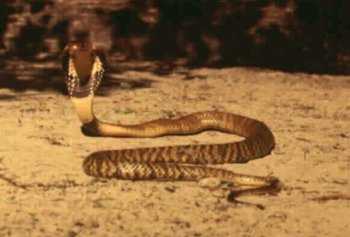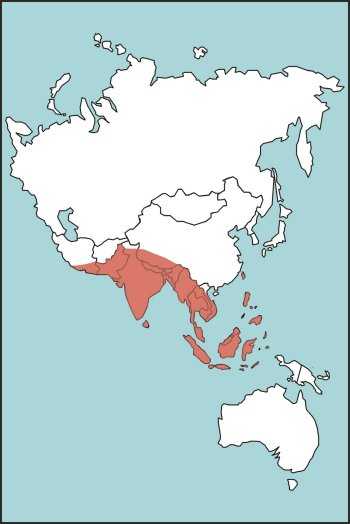Appendix E
DESCRIPTIONS OF VENOMOUS SNAKES
Common cobra

Common cobraor Asiatic cobra
Naja naja
Description: Usually slate gray to brown overall. The back of the hood may or may not have a pattern.
Characteristics: A very common species responsible for many deaths each year. When aroused or threatened, the cobra will lift its head off the ground and spread its hood, making it more menacing. Its venom is highly neurotoxic, causing respiratory paralysis with some tissue damage. The cobra would rather retreat if possible, but if escape is shut off, it will be a dangerous creature to deal with.
Habitat: Found in any habitat: cultivated farms, swamps, open fields, and human dwellings, where it searches for rodents.
Length: Average 1.2 meters (4 feet), maximum 2.1 meters (7 feet).
Distribution: From southeast to southwest Asia, including Indonesia (Figure E-24).
Figure E-24. Common Cobra or Asiatic Cobra Habitat
Survival index
All text and images from the U.S. Army Field Manual 3-05.70: Survival.
Appearance of the materials from the U.S. Army Field Manual here does not constitute or represent endorsement by probablyhelpful.com.
ProbablyHelpful.com is not responsible for inaccurate or outdated information provided by the U.S. Army Field Manual 3-05.70.

